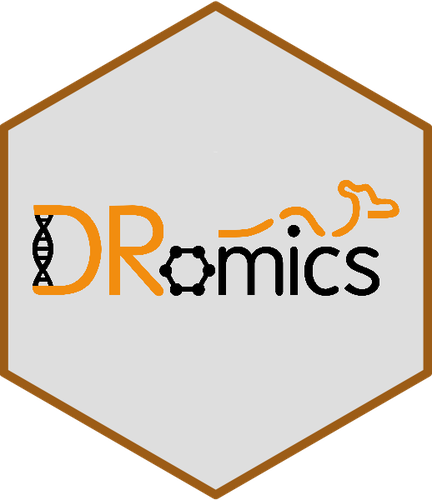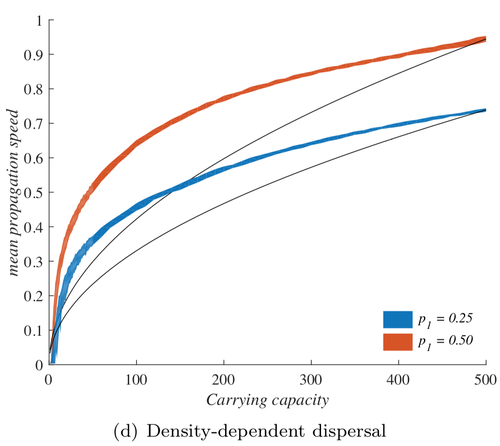Latest recommendations
| Id | Title * | Authors * | Abstract * | Picture * | Thematic fields * | Recommender | Reviewers | Submission date | |
|---|---|---|---|---|---|---|---|---|---|
22 Jul 2023

DRomics, a workflow to exploit dose-response omics data in ecotoxicologyMarie Laure Delignette-Muller, Aurélie Siberchicot, Floriane Larras, Elise Billoir https://doi.org/10.1101/2023.02.09.527852New features of DRomics workflow for improved analyze of dose-response omics data in ecotoxicologyRecommended by Claudia Cosio based on reviews by Jean Armengaud, Beatrice Gagnaire and Rebecca Beauvais based on reviews by Jean Armengaud, Beatrice Gagnaire and Rebecca Beauvais
Our ability to anticipate and estimate how pollution affects components of ecosystems is of paramount importance in the field of ecotoxicology. Dose-response modeling is instrumental, as it allows deriving sensitivity thresholds used at the basis of regulatory risk assessment. In recent years, omics have highly influenced how the impacts of stressors are understood by revealing molecular changes at all levels of biota biological organization (Ebner et al., 2021). To allow analysis of omics data obtained using a typical dose-response design, DRomics a freely available tool for dose-response was proposed composed of both an R package and a free web application (Larras et al. 2018). Advances in this field depend both on theoretical concepts, technology and data integration. In this context, Delignette-Muller et al. (2023) address the question of how to better integrate omics information in dose-response questions. The paper lists previous possibilities of DRomics and presents new features. It is now able to handle all types of continuous omic and continuous non-omic data (e.g. growth data). This new version proposes new visualization tools, functional annotation and improved modeling workflow for a better robustness of analysis of data with few replicates. New features are meant to help for biological interpretation at the metabolic pathway level, to compare different measurements, biological materials or experimental settings. References Delignette-Muller, M. L., A. Siberchicot, F. Larras and E. Billoir (2023), DRomics, a workflow to exploit dose-response omics data in ecotoxicology. bioRxiv, 2023.2002.2009.527852, ver. 4 peer-reviewed and recommended by Peer Community in Ecotoxicology and Environmental Chemistry. https://doi.org/10.1101/2023.02.09.527852 Ebner JN. (2021) Trends in the Application of "Omics" to Ecotoxicology and Stress Ecology. Genes, 12(10):1481. https://doi.org/10.3390/genes12101481 Larras F, Billoir E, Baillard V, Siberchicot A, Scholz S, Wubet T, Tarkka M, Schmitt-Jansen M and Delignette-Muller ML (2018). DRomics: a turnkey tool to support the use of the dose-response framework for omics data in ecological risk assessment. Environmental science & technology, 52(24):14461. https://doi.org/10.1021/acs.est.8b04752 | DRomics, a workflow to exploit dose-response omics data in ecotoxicology | Marie Laure Delignette-Muller, Aurélie Siberchicot, Floriane Larras, Elise Billoir | <p style="text-align: justify;">Omics technologies has opened new possibilities to assess environmental risks and to understand the mode(s) of action of pollutants. Coupled to dose-response experimental designs, they allow a non-targeted assessmen... |  | Aquatic ecotoxicology, Environmental risk assessment, Genetics / Genomics, Marine ecotoxicology, Microbial ecotoxicology, Modelling, Terrestrial ecotoxicology | Claudia Cosio | Rebecca Beauvais | 2023-02-17 15:39:03 | View |
24 Mar 2023
Identifying pesticide mixtures at country-wide scaleMilena Cairo, Anne-Christine Monnet, Stéphane Robin, Emmanuelle Porcher, Colin Fontaine https://hal.science/hal-03815557An original approach for the identification of relevant pesticides mixtures at nationwide scaleRecommended by Pierre Labadie based on reviews by Patrice Couture and Clémentine FRITSCHOver the last decades, pesticides have been massively used in agriculture and their impacts on both the environment and human health are a major growing concern (Humann-Guilleminot et al., 2019; 2019 Boedeker et al., 2020). Improving the prediction of wildlife exposure to pesticides and the associated impacts on ecosystems is therefore crucial. In general, ecotoxicological studies addressing the effects of pesticides include compounds that are selected based on general use over large areas (e.g. regions, country) or specific crop types. Such a selection does not necessarily reflect the mixtures to which species of wildlife are exposed in a particular ecosystem. In this context, Cairo et al. (2023) present an original approach to identify relevant mixtures of current-use pesticides. Their approach relies on public data concerning pesticide sales and cropping, available at a nationwide scale in France and at a relatively high resolution (i.e. postcode of the buyer). Based on a number of clearly exposed and discussed assumptions (e.g. “pesticides were used in the year of purchase and in the postcode of purchase”), their approach allowed for identifying 18 groups that were discriminated by a reduced number of pesticides. Some compounds were found in most or all groups and were termed “core substances” (e.g. deltamethrin and lambda-cyhalothrin). Other compounds, however, were associated with a limited number of groups and termed “discriminant substances” (e.g. boscalid and epoxiconazole). The authors identified groups of molecules that are probably associated with the same mixtures, which warrants the investigation of potential synergetic effects. In addition, their approach allowed for the identification of areas where aquatic biota may be exposed to similar mixtures, which is might prove of interest to further investigate in situ the actual impacts of pesticide mixtures on ecosystems. Note that the approach taken by the authors might be applied by others in other countries, provided a database of pesticide sales is available. REFERENCES Boedeker W, Watts M, Clausing P, Marquez E (2020) The global distribution of acute unintentional pesticide poisoning: estimations based on a systematic review. BMC Public Health, 20, 1875. https://doi.org/10.1186/s12889-020-09939-0 Cairo M, Monnet A-C, Robin S, Porcher E, Fontaine C (2023) Identifying pesticide mixtures at country-wide scale. HAL, ver. 2 peer-reviewed and recommended by Peer Community in Ecotoxicology and Environmental Chemistry. https://hal.science/hal-03815557 Humann-Guilleminot S, Tassin de Montaigu C, Sire J, Grünig S, Gning O, Glauser G, Vallat A, Helfenstein F (2019) A sublethal dose of the neonicotinoid insecticide acetamiprid reduces sperm density in a songbird. Environmental Research, 177, 108589. https://doi.org/10.1016/j.envres.2019.108589 | Identifying pesticide mixtures at country-wide scale | Milena Cairo, Anne-Christine Monnet, Stéphane Robin, Emmanuelle Porcher, Colin Fontaine | <p style="text-align: justify;">Wild organisms are likely exposed to complex mixtures of pesticides owing to the large diversity of substances on the market and the broad range agricultural practices. The consequences of such exposure are still po... | Environmental pollution, Environmental risk assessment, Method standardization, Other | Pierre Labadie | Clémentine FRITSCH, Patrice Couture | 2022-10-14 17:13:06 | View | |
09 Dec 2022

Soot and charcoal as reservoirs of extracellular DNAStanislav Jelavic, Lisbeth Garbrecht Thygesen, Valerie Magnin, Nathaniel Findling, Sascha Müller, Viktoriia Meklesh, Karina Krarup Sand https://doi.org/10.26434/chemrxiv-2021-9pz8c-v5New insights into eDNA sorption onto environmental carbonaceous materialsRecommended by Pierre Labadie based on reviews by Jérôme Duval and 1 anonymous reviewerIn recent years, the use of environmental DNA (eDNA) to investigate biodiversity has gained considerable interest (Thomsen and Willerslev, 2015; Mauvisseau et al., 2022). It allows for the indirect detection of species but it requires a sound understanding of eDNA behaviour and persistence in the environment. This is, however, a complex task because eDNA may be found in several states (e.g., dissolved, adsorbed, intracellular or intraorganellar), which display specific decay rates controlled by environmental factors (Harrisson et al., 2019; Mauvisseau et al. 2022). In the environment, dissolved DNA may interact with the surfaces of various sorbents, including mineral and organic particles/colloids. Current knowledge on eDNA sorption suggests that eDNA–sorbent interactions are controlled by electrostatics as well as inner-sphere complex formation (Mauvisseau et al., 2022). In this context, the work undertaken by Jelavic et al. (2022), focused on the adsorption of eDNA by lesser-investigated carbonaceous materials (CMs), namely soot and charcoal, as common non-mineral environmental surfaces. The authors aimed to study the adsorption capacity of soot and charcoal surfaces with respect to eDNA, in relation to solution parameters (i.e., pH, ionic strength, concentration/type of cations), time and eDNA length, under both non‐equilibrium and equilibrium conditions. Using such an approach, Jelavic et al. demonstrated the large adsorption capacities of CMs and the strong binding of DNA to these sorbents. The authors did not provide definitive conclusions on the mechanisms of eDNA sorption onto CMs. However, they provided new elements suggesting that, along with electrostatic interactions, hydrophobic interactions might play an important role in the adsorption of eDNA to CMs such as soot and charcoal. Altogether, the results presented in this paper highlight the relevance of CMs as sources of biodiversity information. In addition, it is likely that those results will also prove useful for the community to improve protocols for eDNA extraction from environmental samples that contain high fractions of CMs, e.g. urban soils. References Harrison JB, Sunday JM, Rogers SM (2019) Predicting the fate of eDNA in the environment and implications for studying biodiversity. Proceedings of the Royal Society B: Biological Sciences, 286, 20191409. https://doi.org/10.1098/rspb.2019.1409 Jelavic S, Thygesen LG, Magnin V, Findling N, Müller S, Meklesh V, Sand KK (2022) Soot and charcoal as reservoirs of extracellular DNA. ChemRxiv, ver. 5 peer-reviewed and recommended by Peer Community in Ecotoxicology and Environmental Chemistry. https://doi.org/10.26434/chemrxiv-2021-9pz8c-v5 Mauvisseau Q, Harper LR, Sander M, Hanner RH, Kleyer H, Deiner K (2022) The Multiple States of Environmental DNA and What Is Known about Their Persistence in Aquatic Environments. Environmental Science & Technology, 56, 5322–5333. https://doi.org/10.1021/acs.est.1c07638 Thomsen PF, Willerslev E (2015) Environmental DNA – An emerging tool in conservation for monitoring past and present biodiversity. Biological Conservation, 183, 4–18. https://doi.org/10.1016/j.biocon.2014.11.019 | Soot and charcoal as reservoirs of extracellular DNA | Stanislav Jelavic, Lisbeth Garbrecht Thygesen, Valerie Magnin, Nathaniel Findling, Sascha Müller, Viktoriia Meklesh, Karina Krarup Sand | <p style="text-align: justify;">The vast potential of using sediment adsorbed DNA as a window to past and present biodiversity rely on the ability of solid surfaces to adsorb environmental DNA. However, a comprehensive insight into DNA adsorption ... |  | Analytical Chemistry, Environmental chemistry, Environmental monitoring | Pierre Labadie | Anonymous, Jérôme Duval | 2022-04-13 16:08:36 | View |
30 Nov 2022

Chemical effects on ecological interactions within a model-experiment loopDominique LAMONICA, Sandrine CHARLES, Bernard CLÉMENT, Christelle LOPES https://doi.org/10.1101/2022.05.24.493191A model-experiment loop to optimise data requirements for ecotoxicological risk assessment with mesocosmsRecommended by Volker Grimm based on reviews by Charles Hazlerigg and Peter VermeirenIn Ecotoxicology, the toxicity of chemicals is usually quantified for individuals under laboratory conditions, while in reality individuals interact with other individuals in populations and communities, and are exposed to conditions that vary in space and time. Micro- and mesocosm experiments are therefore used to increase the ecological realism of toxicological risk assessments. Such experiments are, however, labour-intensive, costly, and cannot, due to logistical reasons, implement all possible factors or interests (Henry et al. 2017). Moreover, as such experiments often include animals, the number of experiments performed has to be minimized to reduce animal testing as much as possible. Modelling has therefore been suggested to complement such experiments (Beaudoin et al. 2012). Still, the population models of the species involved need to be parameterized and can thus require a large amount of data. However, how much data are actually needed is usually unclear. Lamonica et al. (2022) therefore focus on the challenge of “taking the most of experimental data and reducing the amount of experiments to perform”. Their ultimate goal is to reduce the number of experiments to parameterize their model of a 3-species mesocosm, comprised of algae, duckweed, and water fleas, sufficiently well. For this, experiments with one, two or three species, with different cadmium concentrations and without cadmium, are performed and used to parameterize, using the Bayesian Monte Carlo Markov Chain (MCMC) method, the model. Then, different data sets omitting certain experiments are used for the same parameterization procedure to see which data sets, and hence experiments, might possibly be omitted when it comes to parameterizing a model that would be precise enough to predict the effects of a toxicant. The authors clearly demonstrate the added value of the approach, but also discuss limits to the transferability of their recommendations. Their manuscript presents a useful and inspiring illustration of how in the future models and experiments should be combined in an integrated, iterative process. This is in line with the current “Destination Earth” initiative of the European Commission, which aims at producing “digital twins” of different environmental sectors, where the continuous mutual updating of models and monitoring designs is the key idea. The authors make an important point when concluding that “data quality and design are more beneficial for modelling purpose than quantity. Ideally, as the use of models and big data in ecology increases […], modellers and experimenters could collaboratively and profitably elaborate model-guided experiments.” References Beaudouin R, Ginot V, Monod G (2012) Improving mesocosm data analysis through individual-based modelling of control population dynamics: a case study with mosquitofish (Gambusia holbrooki). Ecotoxicology, 21, 155–164. https://doi.org/10.1007/s10646-011-0775-1 Henry M, Becher MA, Osborne JL, Kennedy PJ, Aupinel P, Bretagnolle V, Brun F, Grimm V, Horn J, Requier F (2017) Predictive systems models can help elucidate bee declines driven by multiple combined stressors. Apidologie, 48, 328–339. https://doi.org/10.1007/s13592-016-0476-0 Lamonica D, Charles S, Clément B, Lopes C (2022) Chemical effects on ecological interactions within a model-experiment loop. bioRxiv, 2022.05.24.493191, ver. 6 peer-reviewed and recommended by Peer Community in Ecotoxicology and Environmental Chemistry. https://doi.org/10.1101/2022.05.24.493191 | Chemical effects on ecological interactions within a model-experiment loop | Dominique LAMONICA, Sandrine CHARLES, Bernard CLÉMENT, Christelle LOPES | <p style="text-align: justify;">We propose in this paper a method to assess the effects of a contaminant on a micro-ecosystem, integrating the population dynamics and the interactions between species. For that, we developed a dynamic model to desc... |  | Aquatic ecotoxicology, Environmental risk assessment, Modelling, Species interactions-webs | Volker Grimm | Charles Hazlerigg, Peter Vermeiren | 2022-05-30 11:05:59 | View |
18 Jan 2022
Machine learning models based on molecular descriptors to predict human and environmental toxicological factors in continental freshwaterRémi Servien, Eric Latrille, Dominique Patureau, Arnaud Hélias https://doi.org/10.1101/2021.07.20.453034Predicting characterization factors of chemical substances from a set of molecular descriptors based on machine learning algorithmsRecommended by Sandrine CHARLES based on reviews by Patrice Couture, Sylvain Bart, Dominique Lamonica and 2 anonymous reviewers based on reviews by Patrice Couture, Sylvain Bart, Dominique Lamonica and 2 anonymous reviewers
Today, thousands of chemical substances are released into the environment because of human activities. It is thus crucial to identify all relevant chemicals that contribute to toxic effects on living organisms, also potentially disturbing the community functioning and the ecosystem services that flow from them. Once identified, chemical substances need to be associated with ecotoxicity factors. Nevertheless, getting such factors usually requires time-, resources- and animal-costly experiments that it should be possible to avoid. In this perspective, modelling approaches may be particularly helpful if they rely on easy-to-obtain information to be used as predictive variables. Within this context, the paper of Servien et al. (2022) illustrates the use of machine learning algorithms to predict toxicity and ecotoxicity factors that were missing for a collection of compounds. Their modelling approach involve a collection of molecular descriptors as input variables. A total of 40 molecular descriptors were extracted from the TyPol database (Servien et al., 2014) as those describing the best how organic compounds behave within the environment. These molecular descriptors also have the advantage to be easily quantifiable for new chemical substances under evaluation. The performances of the proposed models were systematically checked and compared to the classical linear partial least square method, based on the calculation of the absolute error (namely, the difference between prediction and true value). This finally led to different best models (that is associated to the lowest median absolute error) according to the classification of the 526 compounds comprised in the TyPol database in five clusters. These five clusters of different sizes gather chemical substances with different but specific molecular characteristics, also corresponding to different estimates of the characterization factors both in their median and within-variability. In a final step, predictions of characterization factors were performed for 102 missing values in the USEtox® database (Rosenbaum et al., 2008) but also referenced in TyPol. This paper highlights that the molecular descriptors that explain the most the toxicity of the chemical substances in each cluster strongly differ. Nevertheless, these predictions, whatever the cluster, appear precise enough to be considered as relevant despite everything. As a conclusion, this paper is a promising proof-of-concept in using machine learning modelling to go beyond some constraints around the toxicity evaluation of chemical substances, especially handling non-linearities and data-demanding calculations, in in an ever-changing world that is gradually depleting its resources without sufficient concern for the short-term risks to the environment and human health. References Rosenbaum RK, Bachmann TM, Gold LS, Huijbregts MAJ, Jolliet O, Juraske R, Koehler A, Larsen HF, MacLeod M, Margni M, McKone TE, Payet J, Schuhmacher M, van de Meent D, Hauschild MZ (2008) USEtox—the UNEP-SETAC toxicity model: recommended characterisation factors for human toxicity and freshwater ecotoxicity in life cycle impact assessment. The International Journal of Life Cycle Assessment, 13, 532. https://doi.org/10.1007/s11367-008-0038-4 Servien R, Latrille E, Patureau D, Hélias A (2022) Machine learning models based on molecular descriptors to predict human and environmental toxicological factors in continental freshwater. bioRxiv, 2021.07.20.453034, ver. 6 peer-reviewed and recommended by Peer Community in Ecotoxicology and Environmental Chemistry. https://doi.org/10.1101/2021.07.20.453034 Servien R, Mamy L, Li Z, Rossard V, Latrille E, Bessac F, Patureau D, Benoit P (2014) TyPol – A new methodology for organic compounds clustering based on their molecular characteristics and environmental behavior. Chemosphere, 111, 613–622. https://doi.org/10.1016/j.chemosphere.2014.05.020 | Machine learning models based on molecular descriptors to predict human and environmental toxicological factors in continental freshwater | Rémi Servien, Eric Latrille, Dominique Patureau, Arnaud Hélias | <p style="text-align: justify;">It is a real challenge for life cycle assessment practitioners to identify all relevant substances contributing to the ecotoxicity. Once this identification has been made, the lack of corresponding ecotoxicity facto... | Aquatic ecotoxicology, Ecosystem Health, Environmental pollution, Modelling | Sandrine CHARLES | 2021-07-21 09:09:50 | View |
FOLLOW US
MANAGING BOARD
Pierre Labadie (Representative)










